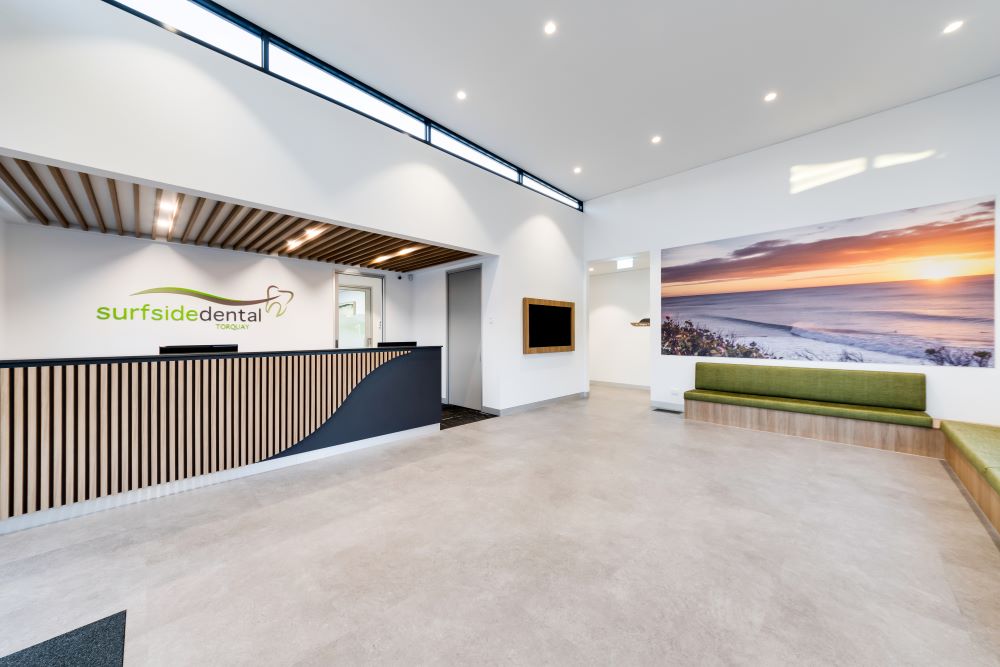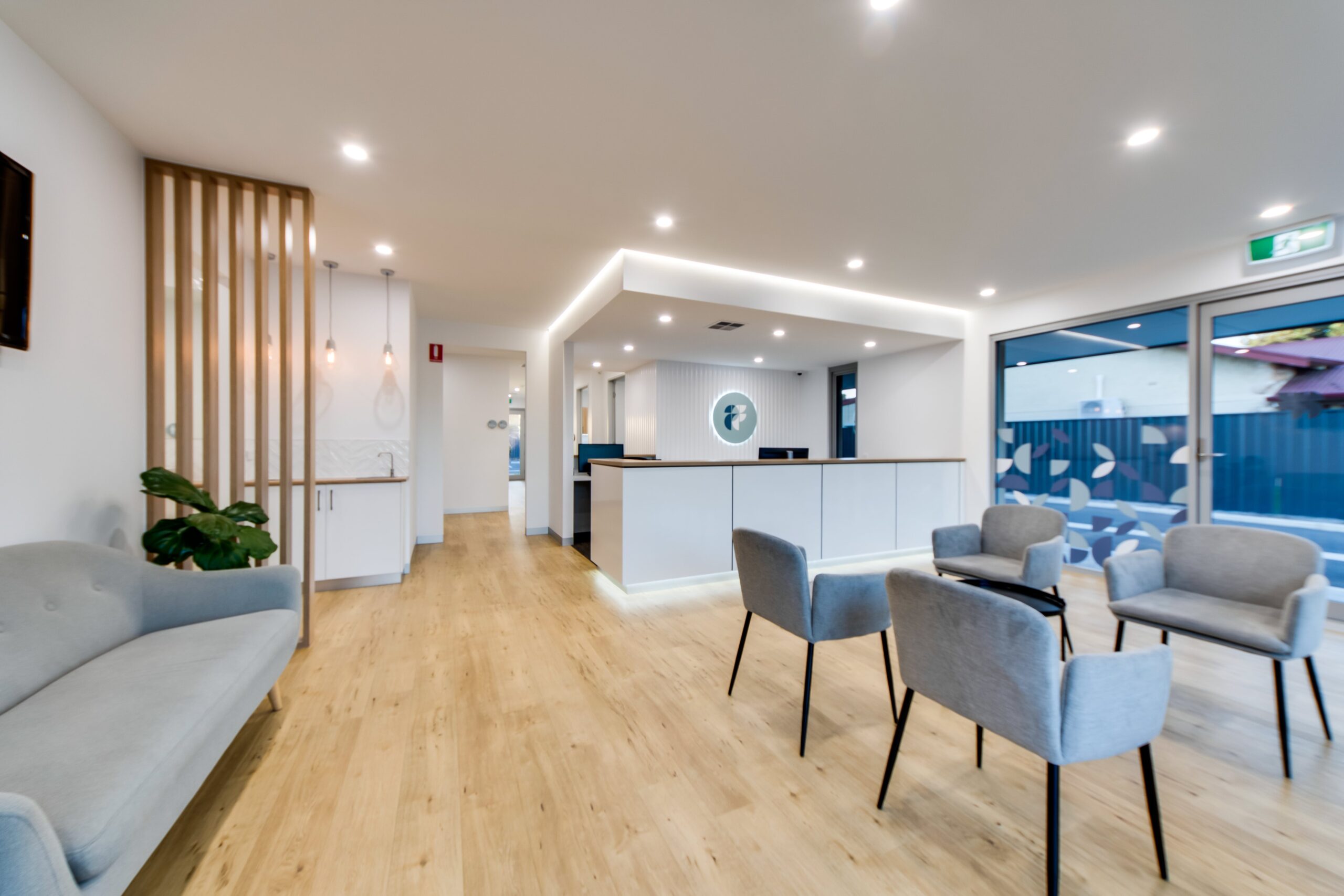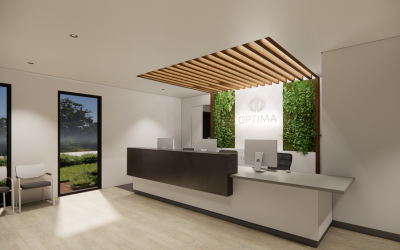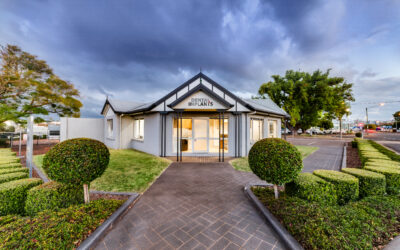Updated: January 2023
Let’s face it: the dental clinic waiting room can be a nerve-wracking place for patients. Emotions around fear, frustration and annoyance are already running high – combine this with uncomfortable seating, piles of dated magazines, and a sterile environment, it’s no wonder people dread visiting dental clinics over the years.
There are numerous existing dental clinics that have neglected dental clinic waiting room design, at the expense of patient experience. Waiting rooms are a live environment and hold a very captive audience. What the patients see, hear and experience within this space is a subconscious indicator of the level of care they can expect throughout their visit. A considered and well-executed dental clinic waiting room design can make all the difference in setting your patient’s mood for an elevated dental clinic experience.
Understanding the needs and considerations of patients and investing in these aspects within the waiting room environment will impact on patient satisfaction and the overall ROI for a clinic. A satisfied patient not only acts as a powerful referral source, which is especially pertinent in the digital age, but this also correlates directly to loyalty and repeat visitation.
While reducing the wait time for appointments is not always possible, there are strategies that can be incorporated at the dental clinic design phase to turn the dreary waiting room experience into a relaxing space that patients will feel at ease in, on entry to your practice environment.
Below is a breakdown what patients notice most in a dental clinic waiting room design, and what you can do to improve your design/layout.
Introducing COLOUR in your dental clinic waiting room design
Colour is a fundamental element of environmental design and has long been known to have both psychological and physiological effects on humans. While it can’t guarantee happy patients, it can have a positive impact on feelings and behaviour. A vibrant splash of colour can go a long way in offsetting an uninviting and sterile space. Shades of blue and green are popular in dental and medical environments due to their calming effects. Aside from the obvious walls, there are so many other unique ways to inject colour and personality including art, chairs and reception décor, plants, lights, and flooring.
Colour – in a balanced application – is a quick, easy and affordable dental clinic waiting room design element that can have a great effect in setting the tone of your entire clinic.

Brightness, open spaces, on-brand pops of colour, and natural artwork co-exist to create an inviting, relaxed vibe to Surfside Dental.
Dental clinic COMFORT & CONVENIENCE – a no brainer
The best dental clinics are designed in a way that conveys professionalism, neatness and a warm and welcoming feeling that helps your visitors instantly feel comfortable and at ease.
Seating and personal space are key characteristics of a quality waiting room design that has the comfort of patients top of mind. Worn-out, uncomfortable, cheap fabric or hard, plastic sears are an instant turnoff, and can have a negative impact on patient’s impressions of the overall clinic. A nice flow and having more than enough seating (adequately spaced apart) will help avoid patients feeling too cramped and alleviate stress and anxiety.

This clever seating arrangement adds variety and choice to the dental clinic waiting room design for patients, allowing them to sit comfortably without feeling like they are shoulder-to-shoulder with others. High quality seating also adds a ‘luxe’ feel to the space.
ENTERTAINMENT – to elevate the dental clinic waiting experience
It’s important to create a variety of spaces within a waiting room to encourage positive distraction and cater to differing needs.
While some may want to spend this downtime catching up on work or entertainment on a device, others may require a space where their children can be amused. A child-friendly play area with beanbags and interactive books could provide a simple solution while a workable countertop with Wi-Fi and power outlets for charging devices is very useful and appreciated by those wanting to use laptops/tablets.
Although smartphones provide personal distractions, television still remains the most common source of entertainment for patients in waiting rooms. However, those that enjoy a quieter environment need to be considered so closed captions can provide an easy solution.
Instead of providing magazines that quickly became irrelevant and dated, consider offering tablets with e-books. Utilising technology is an autonomous way to improve how a patient is feeling about their waiting experience.
Ensuring an optimal dental clinic ENVIRONMENT
Beyond the more obvious, conscious dental clinic design choices, taking advantage of subtle details is important to make your waiting room as spacious and inviting as possible, while ensuring it connects with the overall flow of the wider dental clinic.
There is certainly no one size fits all when it comes to designing successful dental clinic waiting rooms. Many questions arise; how big should a waiting room be? What is the ideal seating layout? Is the clinic wayfinding clear from waiting room to clinical areas? These can only be answered by taking the time to understand the unique needs and considerations of your patient demographic and careful space planning. The best waiting room design examples not only look aesthetically pleasing but accommodate and are designed around the model of care and demographics of the area.
A neat and tidy waiting room sends a message that the whole clinic is committed to high standards of service cleanliness. Lighting can also play a big factor in comfort. Overly bright, harsh lights tend to put people on edge; a softer, dimmer light will calm patients. There is also nothing more awkward than a silent waiting room. Playing some gentle ambient music will promote a peaceful atmosphere and set the tone of a stress-free visit.
Waiting rooms are far too often designed with aesthetics front of mind, overlooking a key opportunity to elevate your patient experience. Take the steps to future-proof your dental clinic at the early design phase. For some inspiration, check out our recent projects.



